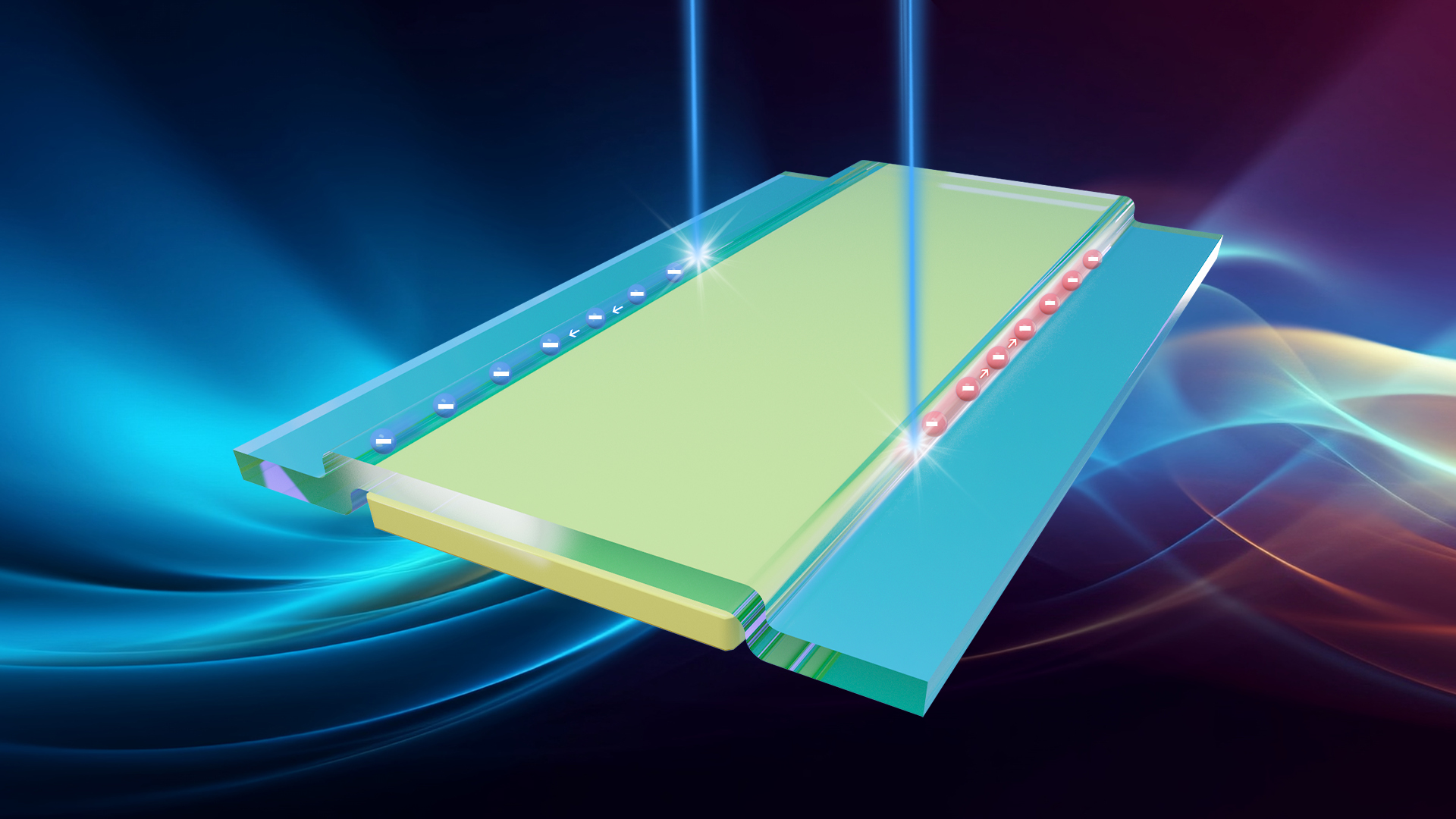Efficient conversion of light to electricity lies at the heart of eco-friendly energy harvesting. The extrinsic photovoltaic effect, utilizing the built-in electric field in p-n junctions or photo-thermoelectric effect, has been widely studied for many decades, and its efficiency has started to reach the theoretical limit. Alternatively, the bulk photovoltaic effect (BPVE) or intrinsic photogalvanic effect, a second-order nonlinear optical effect arising from the broken inversion symmetry of materials, can overcome this efficiency barrier since it does not rely on the extrinsic electric field or thermal gradient.
Van der Waals (vdW) layered materials have the characteristics of low dimensionality, rich variety, and good flexibility, providing another ideal platform for the study of BPVE. Although most vdW materials exhibit lattice inversion symmetry, the periodic structures at nano edges are disrupted, which supports BPVE. However, for the majority of vdW materials, including MoS2 and ReS2, BPVE in nano edges is either negligible or indistinguishable from extrinsic effects.

Assistant Professor Xiaolong Chen’s research team from the Department of Electronic and Electrical Engineering at the Southern University of Science and Technology (SUSTech) recently discovered BPVE in edge-embedded structures, and pointed out that this structure is a potential platform for researching BPVE.
Their research work, entitled “Strong bulk photovoltaic effect in engineered edge-embedded van der Waals structures”, has been published in Nature Communications.
This study discovered strong BPVE in engineered low-symmetric 1D vdW nano edges by constructing edge-embedded homo- or hetero-structures (Fig. 1). The edge-embedded structure is regarded to the nearby region of the bottom edge and top flake as schematically shown in Fig. 1b. The physical properties of edge-embedded structure should be different from those of bulk, since quasi-1D edge states and strains exist in this local region. The edge-embedded strategy shows lower geometric symmetry and distinct local properties, which could support a strong BPVE.
The strategy is unique compared with previous demonstrations in two aspects. Firstly, the proposed edge-embedded vdW structures potentially have thousands of configurations since they can be conveniently constructed using various vdW layered materials. The abundant species of edge-embedded vdW structures provide a platform for physics and device engineering. Secondly, symmetry analysis suggests that the BPVE-induced photocurrents should have reversed polarity at left and right edge-embedded structures, while extrinsic-photovoltaic-effect-induced photocurrents have the same polarity. Thus, this geometric symmetry of the left and right edges embedded in one photodetection device allows the researchers to approximately identify the BPVE-induced photocurrent from the extrinsic one.

Figure 1. (a) & (b) Cross-sectional view of vdW homogenous or heterostructure embedded with edges. The effective vdW coupling between the bottom edge region and the top vdW material can lead to strong symmetry breaking and quasi-one-dimensional edge embedded structures, which have a strong BPVE effect. The symbols “•” and “⊗” denote the y and –y directions of BPVE photocurrent IBPVE, respectively. The purple area represents the substrate. (c) The optical image of the ReS2 homostructure device. The left (xL) and right (xR) edge embedding structures are represented by solid blue and red lines. The bottom and top ReS2 are surrounded by black and red dotted lines, respectively. The scale is 10 μm. d, non-local photocurrent, detected by electrodes 2 and 3 along the left (blue dot) and right (orange dot) edges. The purple-shaded area shows the location of the edge-embedded structure. The yellow shaded area indicates the position of the electrode. The photocurrent in the opposite direction was observed along the left and right edges of the embedded region.
Zihan Liang and Le Zhang, doctoral candidates at SUSTech, and Xin Zhou, a doctoral candidate at the National University of Singapore, are the co-first authors of this paper. Assistant Professor Xiaolong Chen, Research Assistant Professor Xianglong Yu of SUSTech, and Professor Lin Wang of Nanjing Tech University are the co-corresponding authors. SUSTech is the first communication unit of the paper.
The work was supported by the National Natural Science Foundation of China (NSFC), Shenzhen Excellent Youth Program, Shenzhen Basic Research Program, National Key R&D Program of China, Guangdong Major Talent Project, and the Funding for “Distinguished Professors” and “High-Level Talents in Six Industries” of Jiangsu Province.
Paper link: https://www.nature.com/articles/s41467-023-39995-0
To read all stories about SUSTech science, subscribe to the monthly SUSTech Newsletter.
Proofread ByAdrian Cremin, Yingying XIA
Photo By